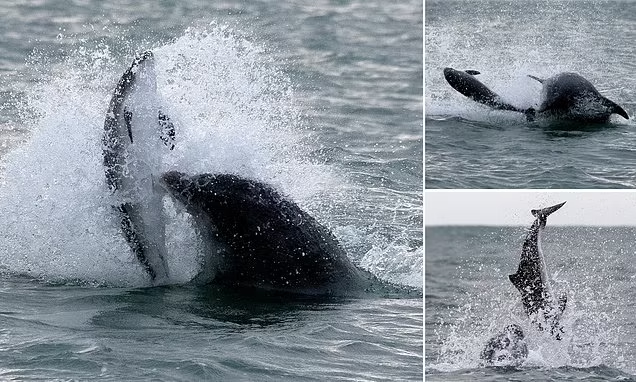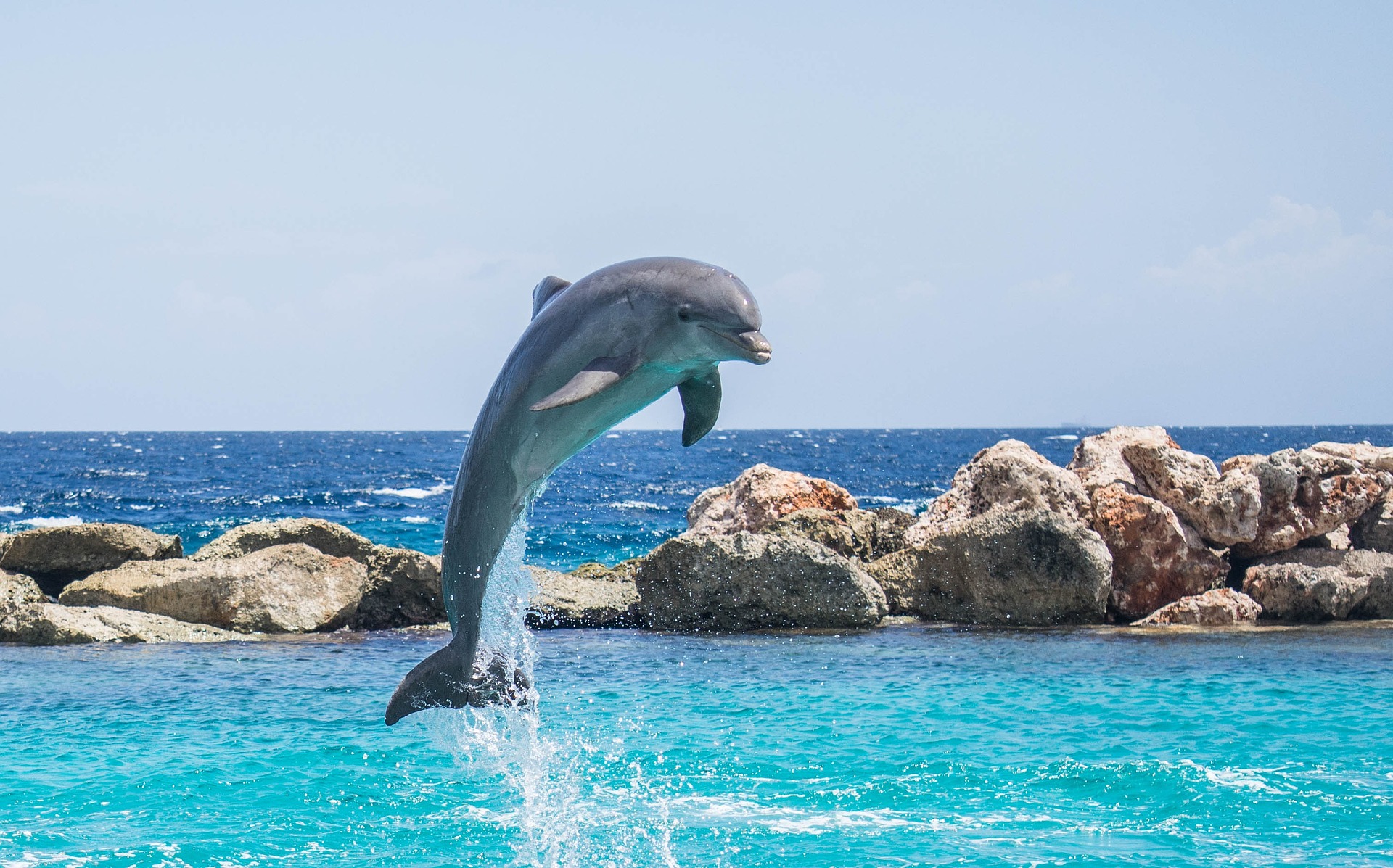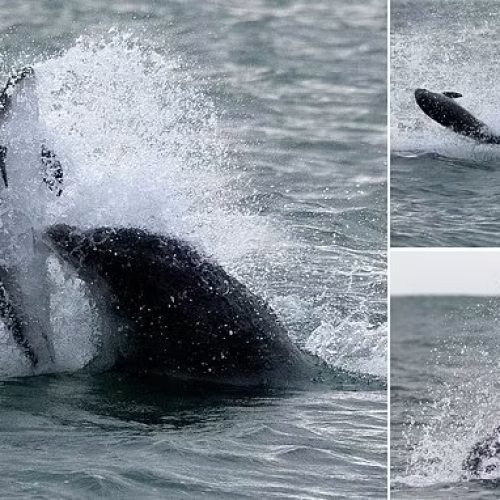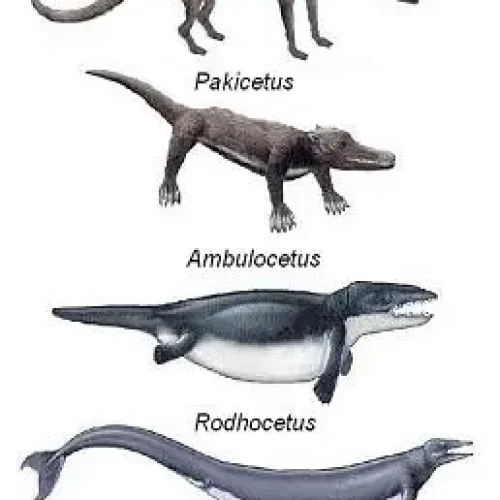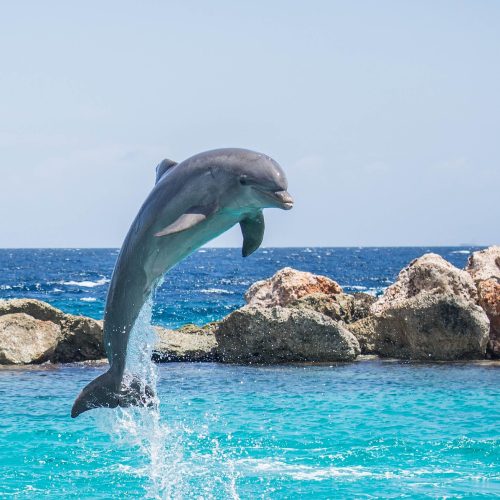You thought dolphins and whales were almost identical? Think again! Behind their apparent similarities lie major anatomical differences that testify to their fascinating adaptation to distinct lifestyles.
From impressive size differences to the shape of their rostra and the crucial role of their fins, let’s dive together into the depths of the ocean to decipher what really sets these iconic marine mammals apart.
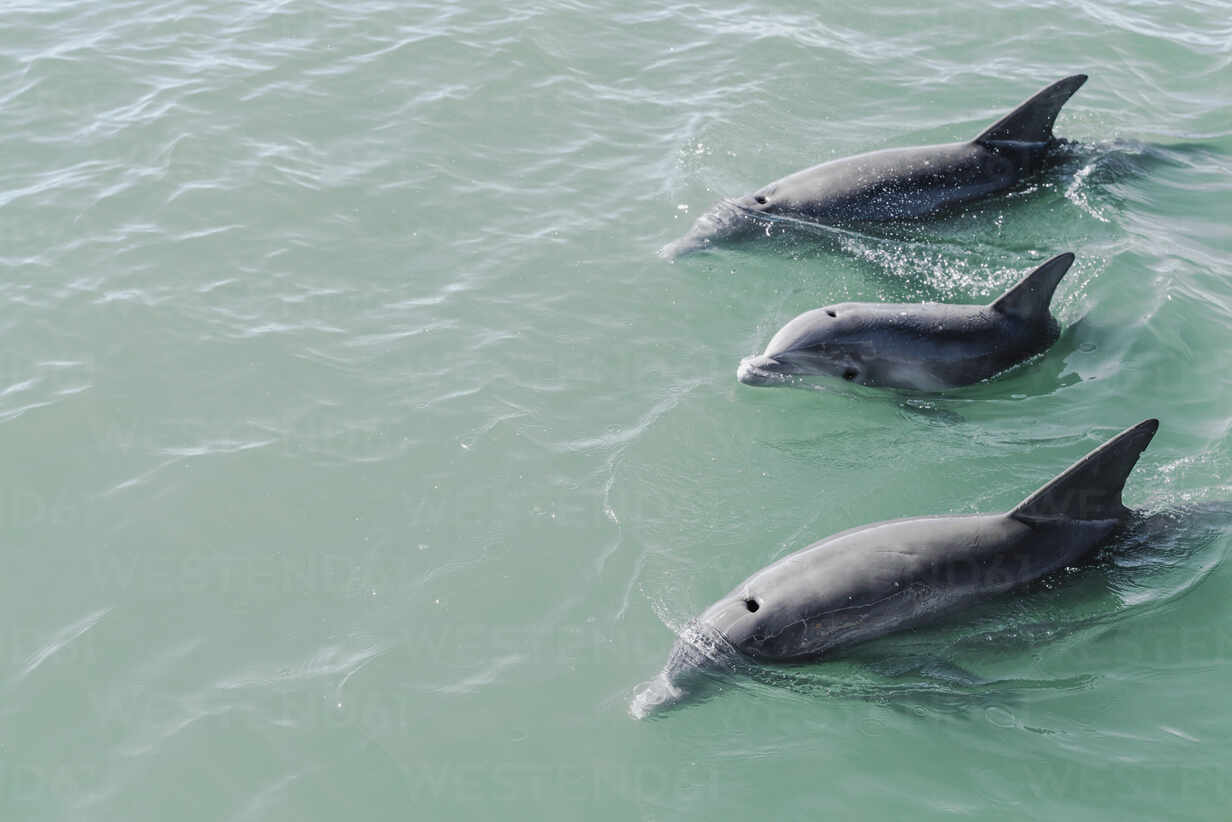
YOU MAY ALSO LIKE – How can you tell if a dolphin is male or female?
In this article
SIZE DIFFERENCES: A SIGNIFICANT GAP BETWEEN DOLPHINS AND WHALES
When it comes to size, dolphins and whales are worlds apart. Dolphins are relatively modest in their dimensions, with the largest species, the orca (killer whale), reaching a maximum length of around 9.8 meters (32 feet) and weighing up to 10 tons. In contrast, whales are the true giants of the oceans.
The blue whale, the largest animal on Earth, can grow up to 30 meters (98 feet) in length and weigh an astonishing 200 tons – the equivalent of about 33 adult African elephants.
BODY SHAPE: AN ADAPTATION TO THEIR LIFESTYLE
The streamlined body of dolphins is a marvel of hydrodynamic efficiency. Their smooth, torpedo-like shape allows them to glide effortlessly through the water with minimal drag, reaching impressive speeds of up to 60 km/h (37 mph).
This agility is crucial for dolphins, as they rely on speed and maneuverability to catch their prey and evade predators.
Whales, on the other hand, have a more massive and bulky silhouette. While this may seem like a disadvantage, it is actually a necessity for their survival.
Whales’ immense size provides them with insulation against the cold waters they inhabit, thanks to a thick layer of blubber under their skin.
Additionally, their large bodies allow them to store vast amounts of energy, enabling them to undertake long migrations and survive for extended periods without feeding.
YOU MAY ALSO LIKE – How fast can a dolphin swim? Here are the secrets of dolphins’ velocity and speed.
FINS: ESSENTIAL TOOLS
– The dorsal fin: an asset for stability
– The unique shape of the dorsal fin in dolphins is a defining feature of their anatomy. Positioned in the middle of their back, the dorsal fin acts as a stabilizer, helping dolphins maintain their balance and direction while swimming.
In some species, such as the bottlenose dolphin, the dorsal fin is tall and falcate (curved), while in others, like the spinner dolphin, it is more triangular.
– In whales, the dorsal fin takes on a variety of shapes and sizes. The sperm whale, for instance, has a small, low hump instead of a prominent dorsal fin, while the humpback whale boasts a small, stubby fin set in a hump.
The fin whale, on the other hand, possesses a tall, sickle-shaped dorsal fin that can reach up to 60 cm (2 feet) in height.
– Pectoral fins: impressive versatility
– Dolphins’ pectoral fins, located on either side of their body just behind the head, are used for a wide range of purposes. They provide stability and help with steering, but also serve as a means of touching and communicating with other dolphins.
Some species, such as the spinner dolphin, have particularly long pectoral fins that can measure up to one-third of their body length.
– In whales, pectoral fins play a crucial role in their survival. These fins are used for steering, stopping, and even as a form of propulsion in some species.
The humpback whale is renowned for its exceptionally long pectoral fins, which can reach up to one-third of its body length and are the largest appendages in the animal kingdom relative to body size. These fins are so dexterous that humpback whales can use them to corral schools of fish while feeding.
YOU MAY ALSO LIKE – Who are the predators of dolphins? Discover their fiercest predators
THE ROSTRUM: A MAJOR DISTINCTION
One of the most noticeable anatomical differences between dolphins and whales is the shape of their rostrum, or snout. Dolphins possess an elongated, beak-like rostrum that is well-suited for their predatory lifestyle.
This streamlined structure allows them to efficiently slice through the water in pursuit of fast-moving prey like fish and squid.
The narrow, pointed rostrum also provides dolphins with an enhanced ability to echolocate. By emitting high-frequency clicks and interpreting the returning echoes, dolphins can pinpoint the location of potential meals with remarkable accuracy, even in murky or low-light conditions.
This combination of speed and precision makes the dolphin rostrum a formidable hunting tool.
In contrast, the rostrum of whales exhibits much more variability in size and shape. This diversity reflects the wide range of feeding strategies employed by different whale species. For example:
– Sperm whales have a large, square rostrum that houses their powerful teeth, enabling them to dive deep and hunt giant squid.
– Right whales and bowhead whales have an arched, upturned rostrum that allows them to efficiently skim zooplankton and small fish from the water’s surface.
– Beaked whales sport a slim, elongated rostrum similar to dolphins, which they use to capture squid and deep-sea fish.
These specialized rostrum shapes have evolved over millions of years, optimizing each species’ ability to exploit specific food sources within their marine environment.
DENTITION: A REFLECTION OF THEIR DIET
Another striking difference between dolphins and whales lies in their dentition. Dolphins are renowned for their conical, sharp teeth that are perfectly adapted for grasping and securing slippery prey.
Depending on the species, a dolphin’s mouth may contain anywhere from 80 to 250 teeth, arranged in interlocking upper and lower jaws.
This impressive dental array allows dolphins to swiftly snatch fish, squid, and even small sharks with ease.
The teeth are not used for chewing; instead, dolphins tend to swallow their prey whole. Interestingly, dolphin teeth are not replaced throughout their lifetime, so maintaining dental health is crucial for their long-term survival.
Whales, on the other hand, exhibit two distinct types of dentition. Toothed whales, or odontocetes, possess teeth similar to those of dolphins. However, the number, size, and arrangement of these teeth vary greatly among species.
Sperm whales, for instance, have around 40-52 large, conical teeth in their lower jaw, while some beaked whales have only a handful of small, peg-like teeth.
In contrast, baleen whales, or mysticetes, have evolved a unique filtration system in place of teeth. Their upper jaws are lined with hundreds of thin, flexible plates made of keratin, known as baleen. These plates hang down from the roof of the mouth, forming a comb-like structure.
To feed, baleen whales swim with their mouths open, allowing water and small prey like krill and plankton to enter. As they close their jaws and push the water out with their tongues, the baleen acts as a sieve, trapping the tiny organisms inside.
This efficient filtration method enables species like the blue whale to consume up to 6 tons of krill per day, fueling their immense size.
The distinct differences in dentition between dolphins and whales underscore the incredible adaptations these marine mammals have undergone to thrive in their aquatic environment.
From the sharp, grasping teeth of dolphins to the specialized filtration systems of baleen whales, these anatomical features are a testament to the diverse feeding strategies that have evolved within the cetacean lineage.

